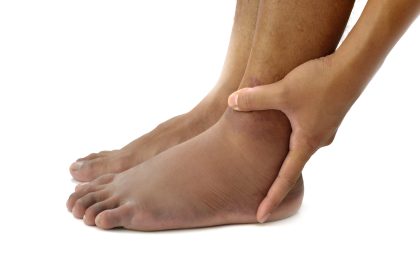When it comes to chronic kidney disease (CKD), not all communities bear an equal burden. A troubling health disparity exists in America that leaves many Black patients undiagnosed until their condition reaches critical stages. Medical experts warn this silent crisis has profound implications not just for physical health, but mental wellbeing as well.
In Georgia alone, medical specialists estimate that approximately 10,000 more Black patients could receive proper CKD diagnoses if healthcare providers improved awareness and diagnostic practices. This gap represents just one example of a nationwide pattern that puts certain communities at significantly higher risk.
The disproportionate impact on Black Americans
The statistics paint a stark picture of kidney disease’s uneven toll. Black Americans represent 32 percent of kidney disease cases nationwide despite making up a much smaller percentage of the population. Even more concerning, they face four times higher risk of developing kidney disease compared to white Americans.
This disparity stems from multiple factors working in combination. Hypertension and diabetes, which occur at higher rates in Black communities, contribute significantly to kidney damage. However, experts note that access to preventive care, early diagnosis, and treatment options also vary dramatically depending on location, income level, and healthcare literacy.
By the time many patients receive specialist care, their disease has already progressed substantially. Approximately 70 percent of patients referred to kidney specialists have already reached stage four CKD, representing severe kidney dysfunction. Within this group, an alarming 90 percent are people of color.
Many of these advanced cases could have been identified and treated much earlier if proper screening protocols were consistently applied, early intervention makes an enormous difference in outcomes.
Understanding the stages of kidney decline
Kidney disease progresses through distinct phases, with each stage representing decreasing kidney function. Medical professionals measure this decline using glomerular filtration rate (GFR), which indicates how well kidneys filter waste from blood.
In stage one, kidneys still function at 90 percent or higher capacity. Patients often show no symptoms, making detection difficult without proper screening. By stage two, function decreases to between 60-89 percent, still with minimal noticeable symptoms.
Stage three divides into two substages: 3a (59-45 percent function) and 3b (44-30 percent). At this point, waste products begin accumulating in the blood, though symptoms may remain subtle. Stage four represents severe dysfunction, with just 29-15 percent kidney function remaining.
The final stage, stage five, indicates end-stage kidney disease with less than 15 percent function. At this point, patients typically require dialysis or transplantation to survive. Without these interventions, the condition becomes life-threatening.
What makes these stages particularly relevant to health disparities is how often Black patients receive diagnoses only in later stages, when treatment options become more limited and outcomes poorer. This delayed intervention contributes significantly to higher mortality rates from kidney disease within these communities.
The hidden mental health burden
Beyond physical symptoms, kidney disease creates a substantial psychological toll that often goes unaddressed in medical settings. Research involving 1,000 kidney patients revealed disturbing patterns of mental health challenges accompanying their physical condition.
Two-thirds of patients experienced symptoms of depression, while over one-third struggled with basic self-care due to mental health issues. Perhaps most alarming, 27 percent contemplated self-harm or suicide during their illness. Despite these concerning statistics, many patients received no mental health support throughout their treatment journey.
The psychological impact stems from multiple sources. The diagnosis itself creates significant anxiety about the future. Treatment regimens like dialysis, which might require three weekly sessions lasting four hours each, disrupt normal life patterns and create dependency on medical technology. Financial concerns about treatment costs add another layer of stress.
For communities already facing healthcare disparities, these psychological burdens compound existing challenges. Support systems that address both physical and mental aspects of kidney disease remain critically important but often unavailable to those most in need.
Recognizing warning signs before crisis
Because kidney disease often progresses silently in early stages, awareness of warning signals becomes crucial for early intervention. Several symptoms should prompt immediate medical evaluation, particularly for those with known risk factors.
Severe fatigue that interferes with daily activities often indicates advancing kidney dysfunction. As waste products accumulate in the bloodstream, they affect multiple body systems, including energy metabolism. Nausea and vomiting typically emerge as kidneys struggle to filter toxins effectively.
Swelling, particularly in the legs, ankles, and feet, suggests fluid retention resulting from decreased kidney function. Loss of appetite frequently accompanies advancing disease, sometimes leading to unintentional weight loss. Persistent itching across the body occurs as waste products accumulate in the skin.
These symptoms warrant prompt medical attention, especially for individuals with hypertension, diabetes, or family history of kidney problems. Black Americans should remain particularly vigilant given their heightened risk profile.
The genetic factor: APOL-1 and kidney risk
Medical research has identified another crucial piece of the kidney disease puzzle – genetic variations that disproportionately affect certain populations. The APOL-1 gene, which provides protection against certain parasitic diseases, contains variations that simultaneously increase kidney disease risk.
These genetic changes appear most commonly in individuals with ancestry from Sub-Saharan Africa, where they evolved as protection against sleeping sickness. Today, approximately half of Black Americans carry at least one APOL-1 risk allele, with one in ten carrying two copies – the configuration associated with highest kidney disease risk.
The genetic connection extends beyond Black communities to include some Hispanic and Latino populations with African ancestry. This genetic factor helps explain why kidney disease rates remain elevated in these groups even when controlling for other risk factors like hypertension and diabetes.
Medical experts emphasize that genetic testing provides the only definitive way to determine APOL-1 status. This information allows for more personalized risk assessment and potentially more aggressive preventive measures for those carrying high-risk genetic variations.
Closing the diagnosis gap
Addressing the kidney disease disparity requires action on multiple fronts, medical experts suggest. Improved screening protocols represent an essential first step, particularly in communities with elevated risk profiles. Regular testing of kidney function for patients with hypertension or diabetes should become standard practice regardless of age.
Healthcare provider education about kidney disease presentation in diverse populations needs enhancement. Some symptoms may manifest differently across demographic groups, and awareness of these variations improves diagnostic accuracy. Cultural competency training helps medical professionals better communicate with diverse patient populations about kidney health.
Community-based education initiatives also play crucial roles in closing the gap. When people understand kidney disease risk factors, warning signs, and the importance of early detection, they become more likely to seek appropriate medical care before the condition advances.
For those already diagnosed with kidney disease, comprehensive care models that address both physical and psychological needs improve outcomes significantly. Mental health support should integrate seamlessly with medical treatment rather than functioning as an optional add-on service.
Promising developments in kidney care
Despite current disparities, several promising developments suggest potential improvements in kidney disease outcomes across all communities. Medical research continues advancing understanding of kidney function and disease progression, leading to more effective interventions.
New medications specifically targeting kidney disease mechanisms rather than just managing symptoms have emerged in recent years. These treatments slow disease progression more effectively than previous options, potentially preventing or delaying the need for dialysis or transplantation.
Home dialysis technologies continue improving, offering greater flexibility and independence for patients requiring this intervention. These advances particularly benefit rural communities where traveling to dialysis centers creates significant hardship.
Telemedicine expansion provides another avenue for improved care, especially for communities with limited access to nephrology specialists. Virtual consultations connect patients with expertise regardless of location, potentially allowing earlier specialist intervention.
Public health initiatives focusing specifically on kidney disease awareness in high-risk communities have shown promising results in pilot programs. These targeted approaches acknowledge and address the unique circumstances affecting kidney health in diverse populations.
By combining medical advances with improved access, education, and cultural awareness, healthcare systems can begin addressing the troubling disparities in kidney disease outcomes. The goal remains ensuring all communities receive timely diagnosis, effective treatment, and comprehensive support for this challenging condition.
















